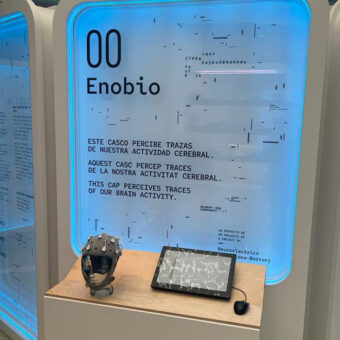Some time ago we carried out an experiment in Starlab to see if we could find stress markers in EEG signals. This research was done within the Interstress European project. The positive results of this experiment were also used as a part of my PhD thesis.
I will briefly explain in this post the experiment and report the results. This case study will put together several concepts we have already covered in this blog, such as guidelines to carry out a proper EEG experiment and EEG signal processing.
Our hypothesis was that stress has to be somehow reflected in the measured EEG signals. The main challenge was to make a proper protocol to induce stress in the participants. After doing an extensive literature review, we decided to have the participants perform a number of tasks: Baseline recording, relax, Stroop test, arithmetics, lecture and finally an unexpected fake blood test. All these tasks (except the fake blood test) were repeated in front of 3 actors that were introduced to the participants as experts in non-verbal communication.The idea of including the actors in the recording was to increase the social stress of the subjects. For more details on these tasks, you can refer to my PhD thesis.
We decided to use the Russell bi-dimensional model of emotions, in which every emotion can be explained in terms of valence and arousal (see figure below). For instance stress, would imply a low level of valence and a high level of arousal. Relaxing would be the “opposite” emotion: high valence and low arousal.
From the literature review, we saw that the alpha asymmetry feature is related with the valence dimension of emotions and that the alpha/beta ratio is related with the arousal dimension. Those were the only features we used throughout all this research.
We first used a statistical approach to see if we could find general trends in our dataset. By performing averages over our participants, we were able to find a clear trend. The “blood sample” task was the more stressful activity (in terms of valence and arousal) while the “relax” task was the most relaxing. The other tasks were found to lie somewhere between “Stress” and “Relax” in a somehow clear line. We have superimposed these results in the Russell model for clarity (see figure above).
This statistical analysis shows a clear pattern in our data and indicates it is indeed possible to correlate our EEG features with stress. This is very nice and actually quite novel (so far I am not aware of any similar research). But in this research we wanted to go one step further. In order to use this system in a real-world application, we need to be able to detect the stress levels of individual subjects, not only the average of this features among a groups of subjects. In order to do so, we used machine learning techniques to classify the stress level for single individual. We used the features of the other subjects for training our classifiers, using the leave-one-subject-out techniques.
Using this approach, we were able to correctly classify 3 different stress levels (relax, baseline and blood sample task) with an accuracy above 90% using only EEG. By including other physiological signals (EMG, ECG and GSR), we were able to reach a performance of 100%. Moreover, all the processing techniques and classifiers are built in such a way that this system can extract the stress-related features in a real time manner and thus this application can be used in realtime. Also we only need 3 EEG channels for this system to work making this very easy to set up and use. Actually, wireless sensors such as ENOBIO are ideal for this type of application. Finally, this system was integrated in a neurofeedback using NeuroVR virtual reality platform where the user can learn to relax by controlling the size and the noise of a bonfire.
We were happy to find stress markers in the EEG signal. But also in this research we found that the presence of the 3 actors did not change our results significantly. So on the one hand we were successful with the choice of the different tasks, but on the other hand we did not succeed to increase the stress of participants by using the actors. In any case, from an optimistic point of view we have to think that all the results, either positive or negative, are always results and will always be helpful.
We are working on a paper to be published soon where all these steps are explained in a deeper manner. Also, if somebody wants more details on this study, please refer to my PhD thesis or just drop me a line. See sou next time!




